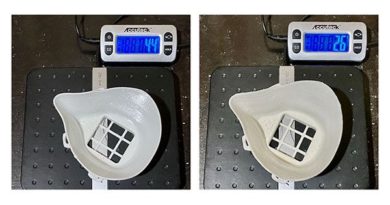Digital Twins and 3D Printing for Army Helicopters
![]()
We are seeing more and more stories at the intersection of 3D printing and Digital Twin / VR technology recently, especially it seems in the domain of aerospace engineering.
In this previous article we looked at how an academic institute in France was loaning aircraft from manufacturers, and digitizing them into 3D models for their own maintenance-focussed VR training programs.
In this article, we are looking at why the US Army is doing something similar with their UH-60 Black Hawk helicopter, but minus the VR stuff (as far as we know).

Image credit: U.S. Army
The Black Hawk is a long enduring bird, and like many aerospace projects it faces issues with the legacy part supply chain. The Black Hawk helicopter entered Army service in 1979, with its Lima model having ceased production 15 years ago. Some of the components of the Black Hawk are at least 40 years old.
Of course, 3D printing can save the day in certain cases. But you need a CAD model for that first.
And so the Wichita State University’s National Institute for Aviation Research (NIAR) will create a Digital Twin of said Black Hawk helicopter with the goal of developing a 3D printing parts replacement assembly line.
Many 3D Digital Twins are built as a kind of dynamic master-model from the beginning of a project, which updates and revises as the model is changed. This adds a lot of downstream value, especially where it comes to technical drawings and manufacturing CAD models.
Why make a dozen different 3D models for the same part when you can simply download the latest geometry from the ever-evolving Digital Twin?
In this case however, rather than reaping the benefits of an extant Digital Twin, the engineers at NIAR are building the Twin with the explicit intention of creating legacy hardware to be 3D printed.
One interesting fact pointed out in the original press release is with regards to tender processes. Apparently, aerospace companies wishing to put a legacy job out to tender will experience fewer bids (or zero bids at all) because vendors do not want to get involved with low-production run jobs with hard-to-acquire components. And if they DO get the bids, then it can take up to 2 years to receive the parts from the manufacturer.
“One of the primary tasks in this effort is to convert all legacy 2D drawings of this aircraft into modern 3D parametric models,” said John Tomblin, senior Vice-President for Industry and Defense Programs and Executive Director of NIAR.
“This will allow the Army to source parts that are out of production as well as use advanced techniques, such as additive manufacturing, to produce parts.”
This new way of thinking is apparently reflected in a U.S. Army Aviation and Missile Command policy memorandum addressing advanced manufacturing for Army aircraft parts, components and support products.
The recently published guidance aims to strike a balance between safety, improvements to readiness and escalating costs, and it appears that additive manufacturing locally and cutting out the middleman are to feature heavily in this new strategy. Especially where it comes to aging aircraft like the Black Hawk.
Of course, creating a new Digital Twin from scratch provides an opportunity to capture any data that may have been missed/omitted during the original technical drawing stages.
“Evolving technologies create a unique challenge as we determine the airworthiness of parts when the data is immature, incomplete or even non-existent,” said AMCOM Commander Maj. Gen. Todd Royar.
“This opens a new door to aviation maintenance and sustainment. We welcome a new partnership with Wichita State University, while fortifying our existing relationships across the Army aviation enterprise.”
And like the VR program at the French school, the Black Hawk twin will ultimately serve as more than just a mere updated CAD assembly model. It can assist with the training of maintenance technicians as well.
“Digital-twin technology provides a virtual environment that facilitates the crawl, walk, run training philosophy that enables Soldiers to develop confidence in a simulated environment before performing the task on an actual aircraft,” said AMCOM Command Sgt. Maj. Mike Dove.
“Virtual environments enable a task to be taught through distance learning with the subject matter expert thousands of miles away.”
Original Source: https://3dprinting.com/aerospace/digital-twins-and-3d-printing-for-army-helicopters/


